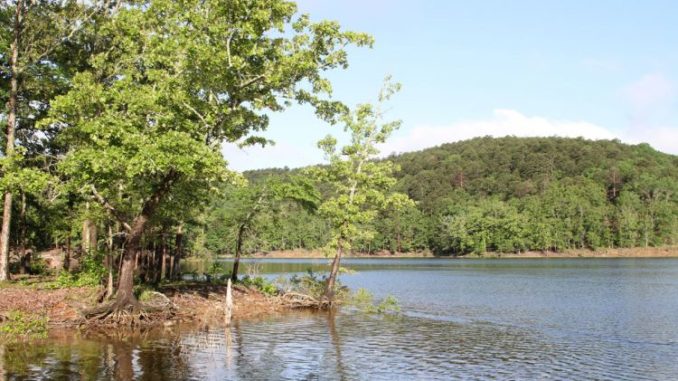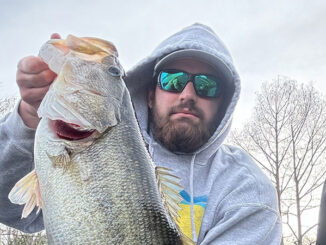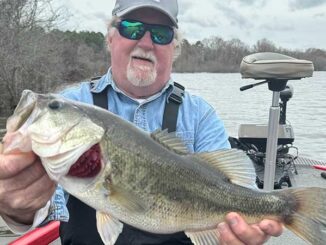
During that transitional time when fish are moving up, the last thing you want to do is go racing into shallow water ready to pitch beds. Fine if you’ve already found a few beds and know just where to go; but what if there are more new beds on your way in?
Good rule of thumb: Speed kills in the shallow spawning areas. Go slow and you’ll almost always do better. They key is to identify the productive areas and then stealthily work each one. Polarized sunglasses, a wide brim hat and a hooded sweatshirt or jersey help dial in your focus, but even before this stage of the operation, you can help yourself by fan casting likely areas with moving baits.
“Once the spawn starts to go, the swimbait is a great search tool,” said Toledo Bend guide Dave Mansue. “Many times, especially those fish that are spawning in deeper water, will feel that swimbait over the top of their head and they may not eat it, but they’ll come up and try to swat it away from their bed. Sometimes, that will tell you exactly where they’re at.”
FLW Tour pro Pete Ponds likens it to the requisite stillness of squirrel hunting: He’ll set up shop in a promising area, drop his Power-Poles and plan on sitting and looking for upwards of 15 minutes. Once he spots a boil or push, he knows he’s close to fish on beds.
“If you get into a shallow flat, swimming a Texas-rigged YUM Lizard with a ¼-ounce weight is a good bait choice,” Ponds said. “Just throw it out there and look for movement. A lot of times you’ll see them ‘shark’ behind it.”
Drawing a strike is great, but simply irritating a fish enough to move can be just as valuable. Find one bedding fish, and you’ll almost always find several peppered along the same shoreline.


